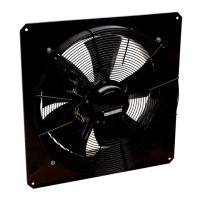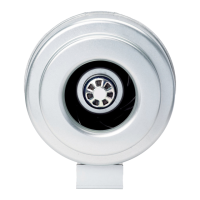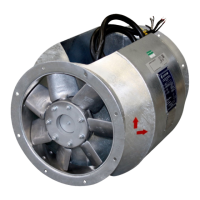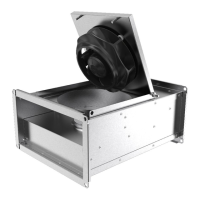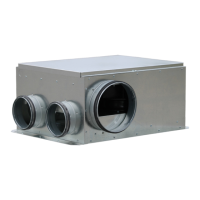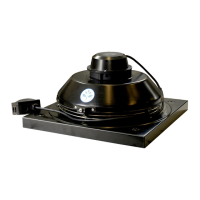Electrical connection |
21
8 Electrical connection
8.1 Safety information
Warning: Danger from electrical voltage.
♦ Observe the 5 rules of electrical safety, see 2.3 5 rules of electrical safety, page 2.
♦ Prevent the ingress of water into the connection box.
♦ Electrical connection may only be carried out by adequately qualified persons, details see Table 1 Qualifications, page
1.
♦ Wear protective equipment during all work in the vicinity of the fan, details see 2.2 Personal protective equipment,
page 2.
8.2 Preconditions
♦ Observe and respect local conditions, regulations and laws.
♦ Abide by the system-related conditions and requirements of the system manufacturer or plant constructor.
♦ Safety elements may not be dismantled, circumvented or deactivated.
♦ Install a circuit breaker in the permanent electrical installation, with a contact opening of at least 3 mm at each pole.
8.3 Protecting the motor
Important
Damage as a result of motor overheating.
The motor can overheat and be destroyed if the thermo-contacts or cold conductor have not been
functionally connected.
♦ Always connect thermo-contacts or cold conductors to a motor protection device.
Table 18 Motor protection
Type
Motor protection
Thermal protection,
standard
Speed regulation
AXC,-B,-D,-G,-P,
AXS, AXCP, AXCPV
By customer
PTC
Possible via frequency converter
AXC...(B),(F),(K)
AXR...(B),(F),(K)
AXCP...(B), (F)
AXCPV...(B), (F)
By customer- must be
bypassed in case of fire
without (PTC optional)
Possible via frequency converter—
must be bypassed in case of fire
AXR
By customer
PTC
Possible via frequency converter
AXCBF
By customer
PTC
Possible via frequency converter
AJ8...(B), (K), (F)
AJR...(B), (K), (F)
By customer- must be
bypassed in case of fire
without (PTC optional)
Possible via frequency converter—
must be bypassed in case of fire
AJ8
AJR
By customer
PTC
Possible via frequency converter
8.4 Connection
♦ Check that the data on the name plate matches the
connection data.
♦ Complete the electrical connection according to the
circuit diagram.
♦ Lay the connection cables in the terminal box in such
a way that allows the cover of the terminal box to be
closed without resistance.
♦ Use all of the locking screws.
♦ Insert the screws by hand to avoid damaging the
thread.
♦ Tighten all glands well in order to guarantee
protection class IP.
♦ Screw the lid of the terminal box/inspection switch
evenly tight.
♦ Connect the cable end in a dry environment!
| 004
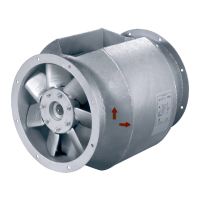
